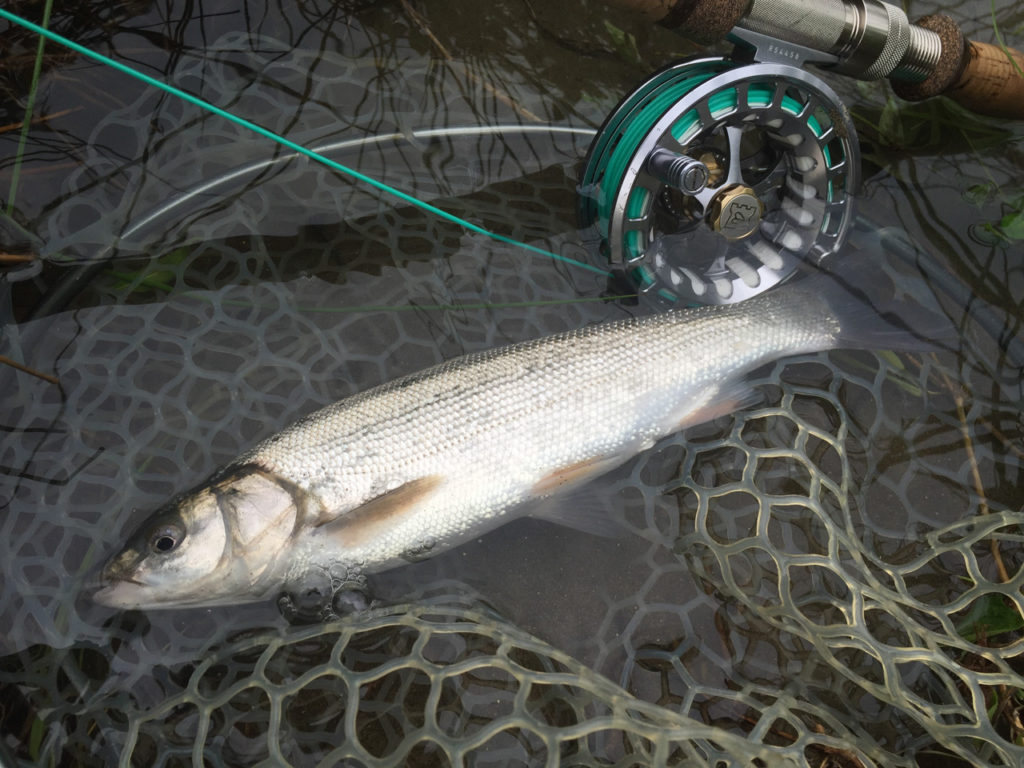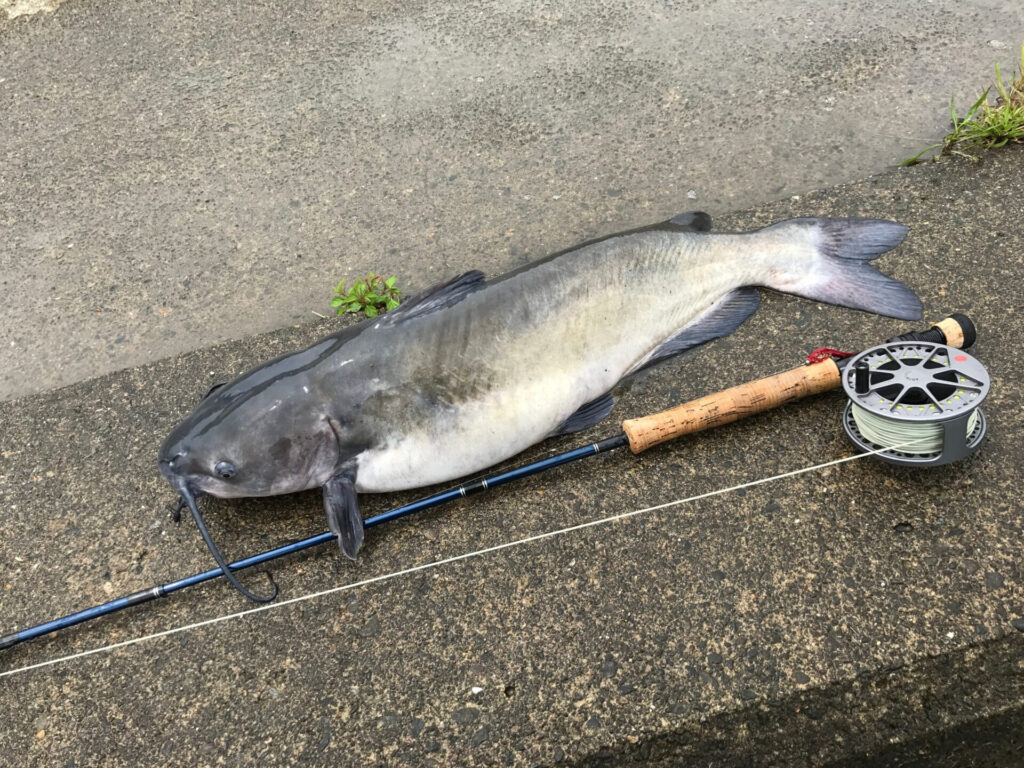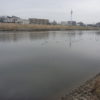Fly Fishing in Greater Tokyo
2023/11/22
- 1. The Fact: “Tokyo" Is Stretched 2,000km Long
- 2. Fly Fishing in Tama District
- 3. Fly Fishing in Metropolitan District
- 4. Fly Fishing Inbetween Metropolian & Islands Districts
- 5. Fly Fishing in Islands District
- 6. Drive on Highways to Surrouding Areas
- 7. Beyond Long-Distance Seaways and Airways
- 8. Need Guide Service?
- 9. Summary & Related Articles
- 10. Tokyo’s Fishs in the Picture
- 11. この記事のディスカッションに参加する | Join the Discussion
What comes across your mind when you hear the word "TOKYO"?
Salarymen walking fast through stations or crowded street? If you ever had a chance to look over Tokyo's cityscape from one of its skyscrapers, you will see endless concrete jungle where the last thing come across our mind is anything but wildlife.
However, fishes in following picture are all caught in the water of Tokyo!

Under the disguise of Tokyo as big city, there are roaming wild fishes ready to meet your fly fishing challenge.
The Fact: "Tokyo" Is Stretched 2,000km Long
Ever so Tokyo is easily mistaken as Tokyo as metropolis, however, there are actually 3 districts forming Tokyo as prefecture. From north to south, Tama District and Tokyo Metropolitan District (23 Wards) are adjuacent to each other, and there is Islands District stretching far into the Pacific Ocean.
Furtherst north of Tama District (Village of Hinohara and Town of Okutama) is part of Chichibu-Tama-Kai National Park. This is where southern rim of Kanto Mountains are collecting rainfall into moutain stream forming River Tama which flows out into the plain then run down to Tokyo Bay.
Tokyo Bay is attached to Uraga Channel then onto Sagami Gulf that stretches into the Pacifi Ocean where Tokyo holds two achipelagos: Izu Archipelago and Ogasawara Archipelago. In this vast area, there are 2,000 species of fish out of Japan's 3,800 specis. There isn't any other great city composed in such manner, but Greater Tokyo.
Fly Fishing in Tama District
North western part of Tama District are part of Kanto Mountains with trout rivers inside a natinal park. Those tributaries of River Tama hold both wild and stocked population of white-spotted chars and cherry salmons. Stock fisheries in this area here hold rainbow trouts. Rivers are open between March and September for trout fishing while stocked fisheries are open all year with some exception.

There is only one lake allowed for fishing: Lake Okutama. This man-made lake holds population of drifted trouts from upstream fisheries in River Taba and River Kosuge. There are vareity of other species including chubs and bass able to fish from few spots flat enough to perform fly fishing while most of the bank is made very steep.

In the center of Tama District is Musashino Plateu curved by two major rivers: River Tama in the west and River Ara in the east. Variety of water springs are forming more tributaries keeping the water temperature stable in the mainstream where you can enjoy warmwater fly fishing for smallmouth bass, catfish, snakehads, and capr family species.

Not only the wild fisheries, there are plenty of stock fisheries availble for off-season with premium quality fish.
- River Tama System
- River Kosuge, River Taba, River Minedani
- Lake Okutama
- River Okutama & tributaries (River Nippara, River Otaba, etc)
- River Aki & tributaries
- River Asa
- River Tama mainstream & tributaries
- River Ara System
- River Iruma & tributaries (River Nariki and River Naotake)
- River Shinkashi (called River Sumida at estuary)
- River Yanase, River Kurome, River Shiarako
- River Sakai (called River Katase at estuary
- Stock fisheries
Fly Fishing in Metropolitan District
Mid section of River Tama and River Ara flowing through Metropolitan District let you enjoy warmwater fly fishing plus tide-sensitive part of those rivers (below Chofu Sluice in River Tama and Akigase Sluice in River Ara) are providing saltwater/brackish water species such as seabass, daces, and seabreams open all-year.

Lowest section of big rivers are crossing with the complex network of canals with warm water exhaust from industrical compounds. They are forming Tokyo's vast brackish water where countless baitfish are produced feeding not only Japan's prime population of Japanese Seabass but also welcoming sea-run Cherry Salmons drifting down from the branch of River Tone via River Kyu-Edo.

Estuary of River Tama next to Tokyo International Airport at Haneda form shallow flats where anglers are chasing sea breams (blackhead and yellow-fin) who have been historically popular game fish in Tokyo since the medieval time.
Aside variety of brackish water species, rockfish inhabits Tokyo Bay and seasonal school of jacks and mackerels are no stranger in higher salinity part the bay.

Unforunately, Tokyo's huge bay area is impacted by SOLAS Treaty signed in 2002 in the middle of Japan's support for US led War on Terrorism which changed local regulations to prohibit access to water in most of places reserved for docking or emergency purposes (or local community and governments took advantage of the treaty to keep strangers away). However, you can selectively fish some areas still open for fishing or hire guide boat to efficienty fish as many spots as possible - contributing to many success stories in saltwater fly fishing here.

Ponds in city parks are all prohibiting the use of "casting tackle with reel" to avoid accidents with pedestrians, but you can still use Tenkara tackle to fly fish for Blue Gilss and gobies.
In Akasaka, Benkei Fishing Area offers the world's only stock fishery using the moat of Castle Edo (today's Imperial Palace).
- River Tama System
- River Tamak mainstream
- River Ara System
- River Ara mainstream
- River Sumida and estuaries
- River Shinkashi, River Shakujii, River Kanda, etc.
- River Tone branch (via River Edo)
- River Kyu-Edo, River Naka, River Shin-Naka
- River Meguro
- Ponds inside city parks
- Canals and bay area banks
- Flats in Haneda and Kasai
- Guide Boats
- Pleasure Boats (rental)
- Stock Fishery
Fly Fishing Inbetween Metropolian & Islands Districts
Tokyo Bay is stretching to Kanagawa and Chiba prefectures where boat fishing provide access to fly fishing for not only more Japanese sabass but also off-shore jack and mackerel spcies including amberjacks and tunas.

Fly Fishing in Islands District
Islands District is made of 219 small islands and rocks in the Pacific Ocean mainly connected by 2 major seaways departing Toky Port at Takeshiba Pier.
Izu Archipelago via Tokai Kisen Seaways
Tokyo-Oshima-Kouzu Route and Tokyo-Miyake-Hachijo Rout provide 2 to 12 hours journey to the islands of Izu Archipelago.
Kuroshio Current flows through this oceanic area spllitting the norhtern side of the archipelago into tempelate climates and the southern side into sub-tropic climates. Islands in the northern side host jacks and mackerels. Islands in the southern side host not only amerjacks and small tuna species, but also cruising sailfish and yellow-fin tunas.
Kuroshio Current running across the Pacific Ocean brings seasonal drifters from different part of Japan and Asia Pacific to this area where small species of trevally are very common.

- Northern Izu Archipelago: Oshima, Toshima, Nijima, Shikine-Jima, Kozu-Shima
- Southern Izu Archipelago: Miayake, Mikura, Hachijo
Ogasawara Archipelago via Ogasawara Kaiun Seaways
Tokyo-Chichijima Route provides 25 hour journey to Ogasawara Archipelago, one of the furthest reach of Japan into the Pacific.
There are variety of sub-tropical species including:
- Pleagic: Dogtooth Tuna, Giant Trevally, Tiger Sharks, etc.
- Reef: Groupers, emperors, snapers, etc.

This is STILL Tokyo where White-tip Shark will snatch your trevally caught on 8wt tackle, Queenfish will take control of your 10wt tackle, or Dogtooth Tuna will snap the 30lb leader on your 12wt tackle.
With or without immerging into fly fishing, you will witness a school of dolphins making friendly gestures or a family of wales singing in sunset while you have the same Tokyo license plate car parked behind you.
This is the Tokyo unknown to many but worth the journey.

Some freshwater species are brought from Hawaii during the era of American Occupation after the Pacific War.

- Ogasawara Archipelago: Chichijima and Hahajima
Drive on Highways to Surrouding Areas
By the way, mainland part of Tokyo is only a southern tip of Kanto Plain stretching 32,420km² holding more major river systems providing huge range of fly fishing destinations connected by highway system spreading from Tokyo.
If you drive north on Tohoku Expressway, for instance, you can go to Nikko where Japan's first Western-style fly fishing was introduced were you can participate being part of living history.


If you drive to the East, you will find vast network of Lake Kasumi's swamps and rivers hosting variety of warmwater species.

- Kanagawa: Rivers in Tanzawa Mountains and Lake Ashi
- Saitama: River Tone, moutain streams of River Ara System
- Gunma: River Tone, alpine lakes
- Tochigi: Nikko's rivers and lakes
- Chiba: Lake Tega, Lake Inba, lower section of River Tone, and coast
- Ibaraki: Lake Kasumi, River Naka, etc.
- Shizuoka: Mt. Fuji spring rivers, Lakes of Fuji, Izu Peninsula, etc.
Beyond Long-Distance Seaways and Airways
Tokyo is also a hub to take you to other islands in Japan.
Tokyo Port at Ariake connects to Shikoku and Kyushu via Ocean Tokyu Ferry with your automobiles.

Tokyo International Airport connects you from Hokkaido to Okinawa. 4-piece struture of fly rod is no coincidence asking for fly fishing anglers to proactively make journey on air then rent a car or book local guides before landing.

Need Guide Service?
If you need guide service to take you through the wonders of Japenase fly fishing or you are travel agent looking for guide service, please contact us using this form.
Summary & Related Articles
We are wishing this article will open new chapter in your fly fishing while staying in Japan, or TOKYO!
Tokyo's Fishs in the Picture
Cockwise from upper left:
- White-spotted Char (River Nippara)
- Cherry Salmon (River Aki)
- Amberjack (Mikura Island)
- Round-jaw Bonefish (Chichi Island)
- Big-eye Trevally (Miayake Island)
- Star-spotted Grouper (Haha Island)
- Skip-jack Tuna (Sagami Gulf)
- Dolphin Fish (Sagami Gulf)
- Japanese Seabass (Tokyo Bay)
- Common Carp (River Yanase)
- Blue Gill (Lake Okutama)
- Largemouth Bass (Hachouji)
この記事のディスカッションに参加する | Join the Discussion
東京フライフィッシング&カントリークラブのFacebook グループ「Friends Lobby」ではメンバー以外の方とのディスカッションも行っています。気になる情報や質問などはこちらまで!
Fishery,Great Waters of Tokyo,Japan Facts,Stories
Posted by Neversink
Related Posts

Lake Okutama – Village of Okutama, Tokyo
Lake Okutama is a reservoir formed by co ...

Okutama Fishing Centre – Oume, Tokyo
Okutama Fishing Centre is trout fishery ...

Top 10 Most Wanted Fish in Japan – 2013
Now it's the season again to see the top ...

Ura Tanzawa Fishing Area, Kanagawa
Uratanzawa Stream Fishing Area lies on ...

Top 10 Most Wanted Fish in Japan – 2015
Now it's the season again to see the top ...
















Discussion
New Pnigbacks & Trackbacks
[…] > About the Island District of Tokyo […]
[…] Great Waters of Tokyo […]
[…] Great Waters of Tokyo […]